
About UsThe Numismatic Bibliomania Society is a non-profit organization promoting numismatic literature. For more information please see our web site at coinbooks.org SubscriptionsThose wishing to become new E-Sylum subscribers (or wishing to Unsubscribe) can go to the following web page link MembershipThere is a membership application available on the web site Membership Application To join, print the application and return it with your check to the address printed on the application. Membership is only $15 to addresses in the U.S., $20 for First Class mail, and $25 elsewhere. For those without web access, write to: David M. Sundman, Secretary/TreasurerNumismatic Bibliomania
Society AsylumFor Asylum mailing address changes and other membership questions, contact David at this email address: dsundman@LittletonCoin.com SubmissionsTo submit items for publication in The E-Sylum, just Reply to this message, or write to the Editor at this address: whomren@coinlibrary.com
BUY THE BOOK BEFORE THE COINYou won't regret it! |
- WAYNE'S WORDS: THE E-SYLUM NOVEMBER 30, 2008
- MANY U.S. MINT REPORTS AVAILABLE ONLINE
- QUERY: COIN DEALER W.H. LIVINGSTON OF EBENSBURG,PA
- THE ANA'S GREEN AND LEUVER ON JOHNSON, MISHLER AND WILDE
- WOULD YOU PAY $100,000 FOR A BOOK?
- NUMISMATICALLY SIGNIFICANT CIRCULATION FINDS
- HILLARY CLINTON PHOTOGRAPHED IN SHELDON'S HUMAN PHYSIQUE BOOK?
- IMAGE: MAVERICK SCRIP NOTE OF LAFAYETTE
- PURPORTED GENUINE POUND COIN - IS IT A FAKE, TOO?
- CORRECTION: WILLARD WIGAN, CREATOR OF THE WORLD'S TINIEST SCULPTURES
- QUERY: MODERN CHOPMARKS ON PAPER MONEY
- FRASER'S INDIAN HEAD NICKEL CLAY MODEL ON DISPLAY IN NEW JERSEY
- WALL STREET JOURNAL ARTICLE HIGHLIGHTS MORGAN'S $100 GOLD COIN SKETCH
- MINT DIRECTOR MOY STRIKES FIRST 2009 ULTRA-HIGH-RELIEF DOUBLE EAGLES
- BERMUDA UNVEILS NEW BANKNOTES FOR 2009
- BIG STINK OVER A LITTLE HEAD: BERMUDA SHRINKS QUEEN'S IMAGE
- BERMUDANS HAVE A BIRD OVER IMAGE ON NEW $50 BANKNOTES
- AUSTRALIAN DEMANDS COMPENSATION FOR ANCESTOR'S IMAGE ON BANKNOTE
- COLLECTOR CASHES COMPANY'S CANADIAN COIN CACHE
- ARTICLE RECOUNTS TOWN'S SEARCH FOR PARKING TOKEN CLUES
- QUERY: 1962 MARILYN MONROE "COIN"?
- FEATURED WEB PAGE: DAVID HALL REMINISCES ABOUT THE EARLY DAYS OF PCGS
WAYNE'S WORDS: THE E-SYLUM NOVEMBER 30, 2008
 Among our recent subscribers are Ralph
Langham, courtesy of John and Nancy Wilson, Joseph A. Barton and Tony
James. Welcome aboard! We now have 1,223 subscribers.
Among our recent subscribers are Ralph
Langham, courtesy of John and Nancy Wilson, Joseph A. Barton and Tony
James. Welcome aboard! We now have 1,223 subscribers.We're publishing later than usual this week because of the holiday weekend, and time is short, so I'll be brief. To learn why one ornithologist is having a bird over Bermuda's new banknote designs, read on. Enjoy the issue, and have a great week, everyone!
Wayne Homren
Numismatic Bibliomania Society
MANY U.S. MINT REPORTS AVAILABLE ONLINE
I'm very pleased to say that of the 33 mint reports issued from 1878 through 1910, I found 23 complete copies and seven partial copies! The only reports that I couldn't find at all were 1889, 1898 and 1905.
Interestingly, most of the reports were not available in "freestanding" volumes, but were part of the Annual Report of the Secretary of the Treasury, which also included copies of the annual reports of the Treasurer and Comptroller of the Currency. As a result, you get a lot of information about currency circulation, specie exports and imports and general economic conditions.
Unfortunately, the only problem with the version of the Mint Annual Report that was included in the Treasury edition is that, for the larger Mint reports, they saved a little space by excluding some of the tables at the back of the report (hence, the partial copies). Since I was primarily looking for the information that was contained in those tables, I was a little annoyed, but, still, the price was definitely right!
Fortunately, I also discovered that the Chamber of Commerce of New York published rather exhaustive annual reports around the turn of the 20th century, so I was able to find the gold deposit information I was looking for, after all.
One more nice thing about Google Books - the books are available in two forms: as .html or as .pdf files. You can search for specific words in the .html versions and you can download your very own .pdf copy (assuming you have a high-speed Internet connection and a big hard drive).
All-in-all, I estimate that I've saved about $1,000 in cash, a bookshelf's worth of space in my library and a lot of time (since it would take a while to acquire that many Mint reports).
One more thing, I also did a few quick searches outside of my parameters and found earlier and later Mint reports. Who knows how many more are waiting to be found?
While it's good to have this information online, it would be very dangerous to allow most of the paper copies to end up in landfills. My take is that each of us should keep on hand what we can in hardcopy format, and rely on the Internet to fill in the gaps.
My set's far from complete, but it does include the 1889 and 1905 reports. I'll lend these to Dave gratis for his research (with a $500 each shipping and handling fee, of course 8-) -Editor
QUERY: COIN DEALER W.H. LIVINGSTON OF EBENSBURG,PA
Former Numismatic Bibliomania Society Secretary-Treasurer Dave Hirt is heading to Budapest soon for the holidays, but he's leaving us with this query - perhaps one of our readers can help. Dave writes:I did not expect it to have too much content, but was quite surprised at the rather amazing quality of the material offered - Flying Eagle and Indian cents, each date in proof. Two cents complete in proof except small motto. Three cent nickels complete in proof. Three cent silver Uncirculated until 1856, after that in proof. Five cent nickels 1866-1912 complete in proof except 1867 with rays. The rest of the sale was also top quality.
My question is, do any of our readers have information on this dealer, and were all his catalogs this small size?
THE ANA'S GREEN AND LEUVER ON JOHNSON, MISHLER AND WILDE
Also, thank you to Cliff Mishler for his support of the ANA's Dwight Manley Library. Of course, I agree with his assessment of the Library as a vital part of the ANA, but we must remember that today the library is more than books and other printed materials, although that may be the core.
The library is information whatever the form and more and more we need to be aware of databases and other sources. Further, we need to think about creating new databases which can be useful to researchers. The researchers who write to The E-sylum with information about web sites or physical collections are contributing to the advance of knowledge by sharing their sources. Thank you to all of you. (Of course we wouldn't do it if it wasn't so much fun!)
Another former ANA employee, Executive Director Bob Leuver adds the following about Cliff and the late Adna Wilde. -Editor
If Cliff becomes president of the ANA, Numismatic News will have to run a special every month just to keep us informed of Cliff's travels. Both Cliff's and David Ganz' travel accounts are always enjoyable reading in Num News. However, Cliff's is salted with many names of people we all have met in person over the years at various conventions and shows. David's journeys are to places we only dream about.
ADNA WILDE, A POSTSCRIPT. Adna's father was a recognized eye doctor. He too was a military man and the Army sent him to Vienna to study ophthalmology and eye operation procedures. In those days, Vienna was the center of medical training and technology. After WWII, Adna considered a medical career, having passed entry exams.
Adna was stationed in Colorado Springs upon receiving his Army commission and was trained as an officer in the 10th Mountain Division. Adna also trained near Aspen. During his training, Adna took leave to return to Joan's home to marry the lovely young lady. As honeymooners, they returned to Colorado Springs. Adna was driving towards Aspen, when he encountered the first vehicles of a convoy of the 10th Mountain Division as they were returning to Ft. Carson in Colorado Springs. The officers told Adna they were being deployed to Europe and Adna and his wife should return to Ft. Carson and await orders.
Adna was wounded during the battle for Monte Casino in Italy. Somewhat apropos for the 10th Mountain division, sans snow. Adna was out of the line for two weeks. Adna never recounted where he was injured (shot).
WOULD YOU PAY $100,000 FOR A BOOK?
Twenty have been sold and it takes six months to hand-produce a single copy. It is filled with photographs and commentary from credible authorities. The subject is Italian, the authorities are Italian, the publisher is Italian. The 62-pound book is a masterpiece of Italian craftsmanship, from the photography, to the special silk and velvet binding.
Of numismatic interest is the bas-relief front cover -- it could be the model for a plaquette by the Renaissance master. The bas-relief is in marble, Carrara marble, that's Italy's best, as is every stitch in the binding. It seems a buyer really gets his money's worth at a hundred grand. The New York Public Library bought a copy. Publicity pictures show the rare book curator holding the Library's copy. In white gloves, of course.
The title is Una Dotta Mono or "The learned hand." Michelangelo would have liked being called that.
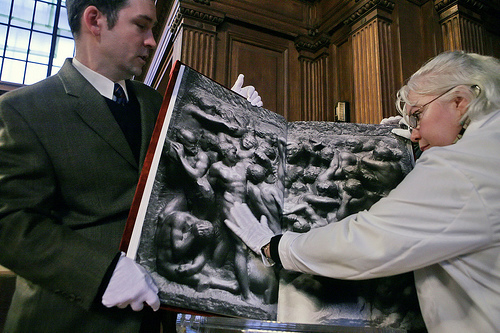
My local paper ran a picture of the bas-relief cover, but here is the picture from the New York Public Library: Would you pay $100,000 for a book? (http://blogs.suntimes.com/bookroom/2008/11/
would_you_pay_100000_for_a_boo.html)
THE BOOK BAZARRE
NUMISMATICALLY SIGNIFICANT CIRCULATION FINDS
HILLARY CLINTON PHOTOGRAPHED IN SHELDON'S HUMAN PHYSIQUE BOOK?
To read the complete article, see: THE GREAT IVY LEAGUE NUDE POSTURE PHOTO SCANDAL (http://query.nytimes.com/gst/fullpage.html?res=990CE7D91131F936A25752C0A963958260)
Pete Smith writes:
Since I have copies of the referenced publications, I can offer a few comments.
1. Sheldon's The Varieties of Human Physique, published in 1940, has only photos of nude men. Their faces and genitals are obscured.
2. Sheldon published his Atlas of Men in 1954. His proposed Atlas of Women was never published.
3. The cover of The New York Times Magazine does include a head shot of Hillary Rodham and she is mentioned in the article. Of note is this from page 40: .By the time Hillary Rodham arrived on the Wellesley campus, women were allowed to have their pictures taken only partially nude..
4. The article by Rosenbaum indicates that others besides Sheldon cooperated in several Ivy League schools. Sheldon would not have taken the Wellesley pictures.
My conclusion from this: Although Hillary was at Wellesley at the right time to participate, her picture was not nude and was never published. I don.t have Will Nipper.s book to read his exact language. The comment about Hillary Clinton is either incorrect or misinterpreted.

IMAGE: MAVERICK SCRIP NOTE OF LAFAYETTE
Last week Dennis Schafluetzel submitted a query about a maverick piece of scrip. He wrote:The piece was sold by R. M. Smythe auction (#272 lot 3647 in Memphis 7/7/2007) from the Schingoethe collection as was cataloged in Tennessee. There is Lafayette, TN in Macon County but the local historian cannot find a record of Frank's Restaurant or the signature Reuben H. Frank during the period. Signature is weak.
I checked the obsolete books I have (SC, TN, AL, AK, MS, FL) and the GA obsolete website and did not find it. If you recognize it let me know. My email address is dennis@schafluetzel.org

PURPORTED GENUINE POUND COIN - IS IT A FAKE, TOO?
Dave Lange, Research Director at Numismatic Guaranty Corporation (NGC) writes:
CORRECTION: WILLARD WIGAN, CREATOR OF THE WORLD'S TINIEST SCULPTURES
R.V. also forwarded these images. The first is a model of the Titanic on the point of a needle, and the second is of the artist and his patron, David Lloyd. He writes: "The man in the orange shirt is the $20,000,000.00 buyer of Willard.s micro-art." -Editor


To read the earlier E-Sylum article, see: WILLARD WIGAN: THE WORLD'S TINIEST SCULPTURES (corrected) (http://www.coinbooks.org/esylum_v11n46a21.html)
QUERY: MODERN CHOPMARKS ON PAPER MONEY
Chick Ambrass writes: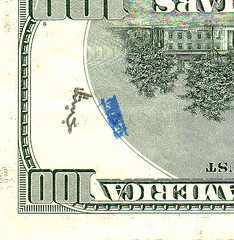
Howard Daniel wrote:
To read the earlier E-Sylum articles, see:
CHOPS ON UNITED STATES NOTES (http://www.coinbooks.org/esylum_v11n15a12.html)
STAR STAMPS ON PAPER MONEY: MODERN CHOP MARKS (http://www.coinbooks.org/esylum_v11n36a10.html)
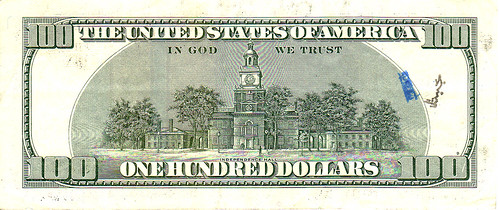
THE BOOK BAZARRE
FRASER'S INDIAN HEAD NICKEL CLAY MODEL ON DISPLAY IN NEW JERSEY
It's not clear from this article whether the model (or "mold" as the article calls it) is only for the Indian Head obverse, or also the Buffalo reverse. Has anyone seen it? Was it known previously in numismatic circles? Does anyone know the owner, Gordon Henderson? -Editor
The exhibit features the original clay mold used by the United States Mint to mint the first 1913-issue "Indian Head" or "Buffalo" nickel minted from 1913-1938. Also on exhibit are artifacts of the storied Woodbridge clay industry that flourished for nearly a century.
The original Buffalo Nickel mold was created from clay mined and manufactured in Woodbridge. The clay mold design was created by famed American sculptor James Earle Fraser (1876 - 1953), whose classic sculptures of national heroes from Jefferson to Patton adorn public spaces across the country. The mint mold is owned by Gordon Henderson of Rutherford, NJ, an accomplished stained-glass craftsman, and was recently on exhibit at the Jane Voorhees Zimmerli Art Museum in New Brunswick.
The exhibit at Woodbridge Town Hall will continue through the month of December and may be viewed by the public during regular Town Hall business hours.
To read the complete article, see: Woodbridge to Display Original Clay Mold used to Mint Indian Head Nickel (http://www.mycentraljersey.com/article/20081126/
GETPUBLISHED/811260328/-1/newsfront)
I asked Dick Johnson about the piece. He writes:
There are a number of these metal patterns in private hands (via a Joseph Lepczyk auction) that anyone with even a modicum of casting knowledge or working with clay could have made a clay model from one of these metal galvanos. The exhibitors would have to prove the provenance of that clay model back to Fraser to be meaningful.
WALL STREET JOURNAL ARTICLE HIGHLIGHTS MORGAN'S $100 GOLD COIN SKETCH
A forgotten sketch that potentially could have graced the face of what would have been the highest denominated American gold coin, had it come to fruition, was recently discovered at the Smithsonian Institution's National Museum of American History in Washington.
No such $100 coin was actually produced by the government. The drawing is the only documentation that exists.
The pencil sketch of Lady Liberty, seated and facing right with a ship coming into the harbor, signals commerce and clearly shows a denomination of $100.
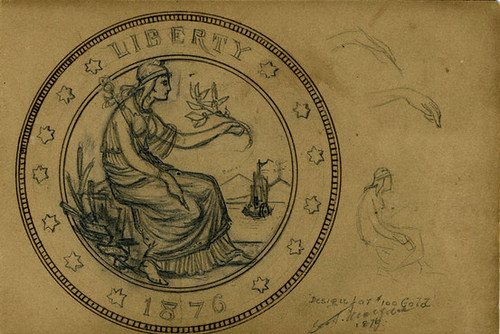
Such a coin would strictly have been used for commerce between countries, rather than general circulation, due to its hefty weight.
The sketch in question is one of many drawings contained in the so-called George T. Morgan sketch book. Mr. Morgan created one of the most popular silver coins, the Morgan silver dollar. That is the coin that appears in many Hollywood Westerns.
The sketch was uncovered by Jeff Garrett during the summer of 2006 while conducting research on the National Numismatic Collection for a book on gold coins.
"One hundred years ago, someone knew we had [the sketch], it's just we have not seen it," said Richard Doty, senior curator of numismatics for the Smithsonian. "This was an artist's sketch mulling over something he was asked to work on."
While there are some Russian coins that are bigger than a hockey puck, Mr. Doty said, such a coin, if done in silver, would have been quite a hunk of metal. In gold, it would have weighed nearly one-third a pound when one considers a $20 gold piece weighs 31 grams.
 It has partnered with a private mint to produce
a "fantasy souvenir item" that mimics how the coin might have looked.
(Only the U.S. Mint can produce actual pocket change.)
It has partnered with a private mint to produce
a "fantasy souvenir item" that mimics how the coin might have looked.
(Only the U.S. Mint can produce actual pocket change.)The private mint, New York Mint & Collectible America, in Minneapolis, has been doing brisk business.
It started selling "normal" one-ounce gold patterns at $1,995, according to media representative Steve Von Schmidt, and the price reached $2,450 due to fluctuating gold prices before it sold all 2,000.
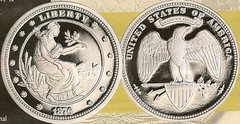 So far, according to the company, it has sold
about 10,000 1.5-ounce silver patterns at $99. There is a "high relief"
one-ounce gold version, with a limit of 999, which was running about
$2,750 recently.
So far, according to the company, it has sold
about 10,000 1.5-ounce silver patterns at $99. There is a "high relief"
one-ounce gold version, with a limit of 999, which was running about
$2,750 recently.A portion of the proceeds from the sale of that product comes back to the National Numismatic Collection, Ms. Lee said.
To read the complete article, see: A $100 Gold Coin? Not Just a Dream (http://online.wsj.com/article/SB122790857804565263.html)
MINT DIRECTOR MOY STRIKES FIRST 2009 ULTRA-HIGH-RELIEF DOUBLE EAGLES
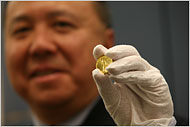 With the push of a button and some 60 tons of
pressure, a blank gold disc was converted into an ultra-high-relief coin
at the branch of the United States Mint here Monday, and a century-old
vision for America.s coinage was finally fully realized.
With the push of a button and some 60 tons of
pressure, a blank gold disc was converted into an ultra-high-relief coin
at the branch of the United States Mint here Monday, and a century-old
vision for America.s coinage was finally fully realized.Producing the $20 coins, initially conceived by the American sculptor Augustus Saint-Gaudens in 1907, has been a personal goal of the mint.s director, Edmund C. Moy, since he was appointed in 2006. .Saint-Gaudens was a bit of a poet and wanted to tell a story,. Mr. Moy said at a ceremony Monday at the branch, where the new coin was first struck. .Liberty has visited America and is now marching into the rest of the world, led by enlightenment. America.s best days are ahead..
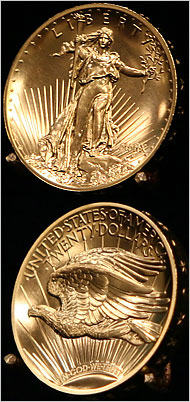 In President Theodore Roosevelt.s opinion, those
ideals weren.t embodied by existing coins, and he commissioned his friend
Saint-Gaudens to come up with fresh designs.
In President Theodore Roosevelt.s opinion, those
ideals weren.t embodied by existing coins, and he commissioned his friend
Saint-Gaudens to come up with fresh designs. His vision for the coin, known as a double eagle (it was twice the value of the $10 coin known as the eagle), was hailed by Roosevelt and others as a classical masterpiece. A full figure representing Liberty strides toward the viewer, torch raised, hair flowing and robes billowing, one foot on a promontory while the sun rises over the Capitol dome behind her. The reverse shows an eagle in flight over a blazing sun. The coin.s mastery lay chiefly in two trademarks of the sculptor.s style, typical of his medals: the comparatively high relief and the graceful incorporation of lettering in the design.
But one crucial person was not enamored: Charles Barber, chief engraver of the United States Mint at the time and a designer himself of several coins then in circulation . those Roosevelt and much of the public so disliked. According to Alison Frankel.s 2006 book, .Double Eagle,. Barber fought for his turf and did little to smooth the way for Saint-Gaudens.s designs.
Barber.s main critique was that the coin.s exceptionally high relief made production impossibly slow and difficult, and he had a point. In early tests up to 11 strikes per coin were required to bring out all the details. A variation using a smaller but thicker blank had to be abandoned because such a change would need Congressional approval.
The newest coins, slightly more than an inch in diameter, use the smaller, thicker blanks rejected in 1907, are dated MMIX (2009), and contain exactly an ounce of 24-karat gold. The original coins were larger in size and contained 22-karat gold, hard enough to withstand circulation, but Mr. Moy, said modern investors prefer pure gold, which also has the benefit of being soft enough to turn into ultra-high relief coins.
The first $20 coin will be placed in the National Museum of American History of the Smithsonian Institution. The rest, which will be produced for only a year, go on sale to collectors and investors in January, at a price still to be determined, based largely on the current bullion price of gold. (On Monday afternoon it was about $824 an ounce in New York.)
Though the new coin is largely faithful to Saint-Gaudens.s vision, in one respect it won.t resemble the original: the reverse still reads .In God We Trust..
To read the complete article, see: Century Later, Gold Coin Reflects Sculptor.s Vision (http://www.nytimes.com/2008/11/25/arts/design/25coin.html?_r=1)
BERMUDA UNVEILS NEW BANKNOTES FOR 2009
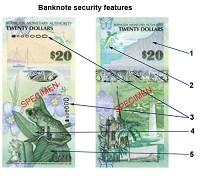 Cash may not be plentiful right now - but it's
certainly getting more colourful.
Cash may not be plentiful right now - but it's
certainly getting more colourful.The island's currency has undergone a complete redesign, and will soon utilize state-of-the-art anti-counterfeiting technology - and feature animals and local settings in its artwork.
The Bermuda Monetary Authority this week unveiled the new bills - which will begin circulating along side current banknotes in early '09.
They're also typeset vertically instead of horizontally, something not seen on many national currencies, except for Venezuela and Switzerland.
The $2, $5, $10 $20, $50 and $100 denominations keep their overall colour scheme, but now display birds, fish, or in the case of the twenty - a small frog where the Queen's head would normally be.
The portrait of the Queen has been removed as the prominent image, made smaller, and will now be featured in the bottom left corner of the front of the bill.
Pictures of prominent Bermuda landmarks such as the Lighthouse, Somerset Bridge, and St. Peter's Church adorn the reverse sides.
But the most important feature of the new notes is their cutting-edge security features, BMA officials said.
They have a unique feature called 'optiks' in the form of an oval on the front strip, which look metallic in reflected daylight, and transparent with a map of Bermuda on the back strip, according to Marcia Woolridge-Allwood, director of corporate and financial services at the BMA.
2. See-through feature when held to light
3. Serial numbers increasing in size
4. Iridescent band on the $20, $50 and $100 denominations
5. Latent image (tilt the image and the denomination numeral appears)
To read the complete article, see: High-tech new cash unveiled Redesigned notes to begin circulating in 2009 (http://www.bermudasun.bm/main.asp?SectionID=72&
SubSectionID=205&ArticleID=39674&TM=5467.83)
BIG STINK OVER A LITTLE HEAD: BERMUDA SHRINKS QUEEN'S IMAGE
Redesigned after more than 35 years, the new notes feature instead what officials call "a distinct Bermudian look with the use of bold colours, as well as local scenes, flora and fauna".
Pictures of HM hang in public and private houses throughout the island and one Bermudian tells me he is depressed that no one saw fit to register any objection. "There is a faction here that wants to sever our ties with Britain and I guess to appease them the Governor, Sir Richard Gozney, went along with it," he says. "Likewise Buckingham Palace and the UK Post Office." The Bermuda dollar was first issued in 1970 following the switch from sterling and is pegged to the US dollar. The new-style notes will be available for the public to use early next year, which marks the 400th anniversary of Bermuda's settlement by the Englishman Sir George Somers.
The Queen will now feature only in a much-reduced size on the front-left corner of each note, which currently comes in denominations of $2, $5, $10, $20, $50 and $100.
To read the complete article, see: Island's currency redesign shrinks the Queen's head (http://www.telegraph.co.uk/news/newstopics/mandrake
/3520862/Islands-currency-redesign-shrinks-the-Queens-head.html)
BERMUDANS HAVE A BIRD OVER IMAGE ON NEW $50 BANKNOTES
 One of the Longtails featured on Bermuda's new
$50 banknote as been described as the wrong bird . a species that does not
nest on the Island.
One of the Longtails featured on Bermuda's new
$50 banknote as been described as the wrong bird . a species that does not
nest on the Island. Eminent environmentalist David Wingate said he was "appalled" by the choice of the Red-billed Tropicbird, which hails from the West Indies and eastern Pacific, for the main image on the note.
"I was just yesterday looking at the notes and thinking how pretty they are but then I realised the Longtail featured is the wrong species which we don't have nesting here," he told The Royal Gazette.
"I regard it as a serious error for a 400th anniversary note printing, kind of like saying we meant to use a picture of Sir George Somers but one of American President George Washington will do."
Dr. Wingate said the non-native bird is featured sitting at the bottom of one side of the note, as the main image.
The Bermuda Monetary Authority last night apologised for "any specific technical error". However, spokeswoman Pat Phillip-Bassett said it was understood that the Red-billed bird was present on the Island, and it was chosen as the main image because its colour better fits the design of the note.
Ms Phillip-Bassett, assistant director of corporate governance and communications at the Bermuda Monetary Authority said: "A banknote design has to combine aesthetics, accuracy of depiction and technical concerns.
"The new Bermuda notes feature graphical representations of the colours, flora and fauna present in the Island. The research conducted for the banknote redesign initiative in conjunction with our partners in this project, De la Rue Currency, the international note printing firm based in the UK, showed references to both the White-tailed Longtail and the Red-billed Longtail as being present in Bermuda, with both appearing to have similar markings, albeit at different stages of maturation, and this is reflected in the representative graphic on the new $50 Bermuda note.
"Given the aesthetic considerations for this note, i.e. it is predominantly pale yellow in colour, the Red-billed Longtail was used for the main image to provide greater contrast. We apologise for any specific technical error within the graphical representations of the notes; they were designed with the objective of, among other matters, conveying the overall characteristics and image of Bermuda's natural beauty. The notes are now finalised and will be issued early next year."
According to Andrew Dobson, President of the Bermuda Audubon Society, the choice of the non-local bird is not the only thing that has riled environmentalists.
Other creatures that are not endemic to Bermuda feature on some of the other banknotes.
"There is some concern expressed that the whistling frog ($20) was an accidental introduction. Similarly, the cardinal bird ($100) was introduced by man," he noted.
To read the complete article, see: Longtail on new money isn't 'our' species (http://www.royalgazette.com/siftology.royalgazette
/Article/article.jsp?articleId=7d8be3f30030003§ionId=60)
AUSTRALIAN DEMANDS COMPENSATION FOR ANCESTOR'S IMAGE ON BANKNOTE
Allan "Chirpy" Campbell, an activist for Aboriginal rights, told the Reserve Bank of Australia that they did not have permission from the "real family" of David Unaipon.
Mr Unaipon was a preacher, author and inventor who held a patent for a sheep shearing mechanism that is shown on the note. He died in 1967. His image has been used since 1995.
To read the complete article, see: Family demand banknote image payout (http://www.google.com/hostednews/ukpress/article/
ALeqM5gMXbhCoZ5gBJbN_7g5nLMvN9XjVQ)

COLLECTOR CASHES COMPANY'S CANADIAN COIN CACHE
An E-Sylum reader writes: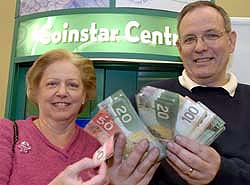 A Texas man's cross-border trek to cash in a
large number of Canadian coins acquired at auction has paid off with a
tidy sum just in time for the holidays.
A Texas man's cross-border trek to cash in a
large number of Canadian coins acquired at auction has paid off with a
tidy sum just in time for the holidays. Michael Lay crossed the border with 42 bags of assorted Canadian coins worth $4,211 that he cashed in at a Coinstar Centre in a Hamilton supermarket Tuesday.
The machine accepts loose, unsorted change without having to be wrapped or rolled, and provides a voucher for value of the change which can be converted to cash or applied to in-store purchases, said Coinstar spokeswoman Marci Maule.
Maule said Lay had called the company's customer service department and mentioned he was going to Connecticut to visit his daughter, who attends Yale Law School, and was thinking of heading to Canada to cash in the coins.
As a collector, Lay said he is interested in foreign and collectible coins, but admits he took a chance buying the bags at a Houston auction not knowing exactly what the contents were.
The coins he purchased originally came from a Houston-area bus company, which over the years had collected them from passengers who had used them as bus fare. The problem was the coins were either no longer in circulation or weren't legal tender in the U.S.
Along with the large amount of Canadian coins, the collection included a rare two-cent coin from the U.S. Civil War era, several 1930s Canadian nickels, a liberty head half-dollar piece and several Chuck E. Cheese restaurant tokens.
"I did get a whole lot of junk pieces, tokens, some things I had never heard of ... but there were a lot of good things in there," Lay said in a phone interview Wednesday at a car dealership in New Haven, Conn., where his daughter's car was being repaired.
"I feel like I've at least doubled the money that we spent at the auction."
To read the complete article, see: Trek north to cash in Canadian coins pays off (http://cnews.canoe.ca/CNEWS/World/2008/11/26/7546401-cp.html)
ARTICLE RECOUNTS TOWN'S SEARCH FOR PARKING TOKEN CLUES
An E-Sylum reader forwarded this article - readers may appreciate the difficulties (and rewards) in researching decades-old numismatic items. He writes:The gift of a coin from a man in Virginia to the City of Farmington Hills created a lot of questions about what happened here.
The coin, about the size of a quarter, says "Good for parking only" on one side. On the other side is written Federal APD, Farmington Hills, Michigan.
Did Farmington Hills ever have a parking lot?
Clyde Pitchford, of Franklin, Va., found the token in his late father's coin box. He speculated it was from his father's Navy days, 1939-60. This would make the little coin an antique.
However, Farmington Hills didn't incorporate until 1973, 35 years ago.
There was a Federal's Department Store in downtown Farmington.
The History Room at the Farmington Library had directories which revealed the answers.
Federal Products in 1977 was located on Indoplex Circle in Farmington Hills. They manufactured gauges. Jack Longlais was the manager.
Before 1989, the listing was for Federal APD on Crestview Court. By 2004, Federal APD moved to Nine Mile Road in Novi.
A call to Federal APD in Novi revealed that APD referred to advance parking devices.
Rodney Hoover, advertising manager, never remembered making gauges in Farmington Hills. They make parking devices.
The coin was from a trade show and used for advertising.
Clyde Pitchford picked a good time to send this artifact to Farmington Hills, because the city is planning a small historical museum at Heritage Park.
The coin will find a place in Farmington Hills history.
To read the complete article, see: Digging for answers on mystery coin (http://www.hometownlife.com/article/20081123/LIFE/811230355)
QUERY: 1962 MARILYN MONROE "COIN"?
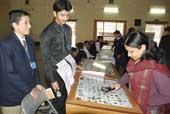 Half a rupee, quarter anna and half anna were
introduced by East India Company after the World War I as silver became
costly after the war, said Aditya Singh, a Class IX student of Loyola
School.
Half a rupee, quarter anna and half anna were
introduced by East India Company after the World War I as silver became
costly after the war, said Aditya Singh, a Class IX student of Loyola
School. He put the coins on display at the inter-school philatelic and numismatic exhibition-cum-competition organised by the philatelic and numismatic club of Loyola School for the first time.
He had the rarest of rare coins in bronze, silver and other metal that were in use during British era.
The exhibition was a unique journey through history of the world. Five schools of Jamshedpur including the host participated in the competition. The competition proved that students still take a lot of interest in collecting rare stamps and coins, though few write letters in the age of computers. Their collection is through contribution of their parents or grandparents but they have valued it.
One got to see a rare coin of the US with an image of Marilyn Monroe issued in 1962 was also on display.
.Through the exhibition we would like to teach the students the value of coins. Coins are a mixture of knowledge, historical glory, metallurgy and minting excellence. In the age of computers and technology, people no longer write letters and stamps have become just a hobby only. Therefore, we though of organising this competition,. said A. Lilavati, the moderator of philatelic and numismatic club of Loyola School.
To read the complete article, see: Coins, stamps speak of glorious past - Students of five schools come up with rare collection (http://www.telegraphindia.com/1081126/jsp/
jharkhand/story_10165161.jsp)
FEATURED WEB PAGE: DAVID HALL REMINISCES ABOUT THE EARLY DAYS OF PCGS
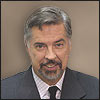 This week's featured web page is recommended by
Len Augsburger. It's a video interviewing PCGS founder David Hall about
the creation of the third-party grading industry in the U.S. Len writes:
This week's featured web page is recommended by
Len Augsburger. It's a video interviewing PCGS founder David Hall about
the creation of the third-party grading industry in the U.S. Len writes:
www.pcgs.com/articles/article_view.chtml?artid=5519
